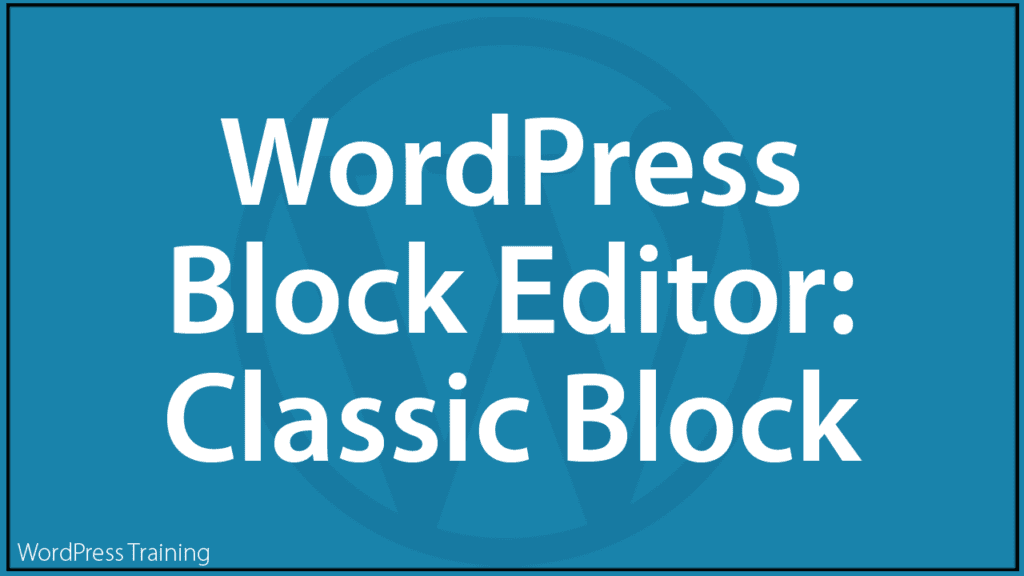WordPress Block Editor – Classic Block

This tutorial is part of our series on How To Use The WordPress Block Editor (Gutenberg).
- To learn more about using the WordPress block editor interface, go here: The WordPress Block Editor – Content Area
- To learn more about using blocks, see this tutorial: How To Use WordPress Block Editor Blocks
- For additional information, see this tutorial on How To Use The WordPress Classic Editor.
***
Classic Block – Description
The Classic block works just like the WordPress Classic Editor but in block form.
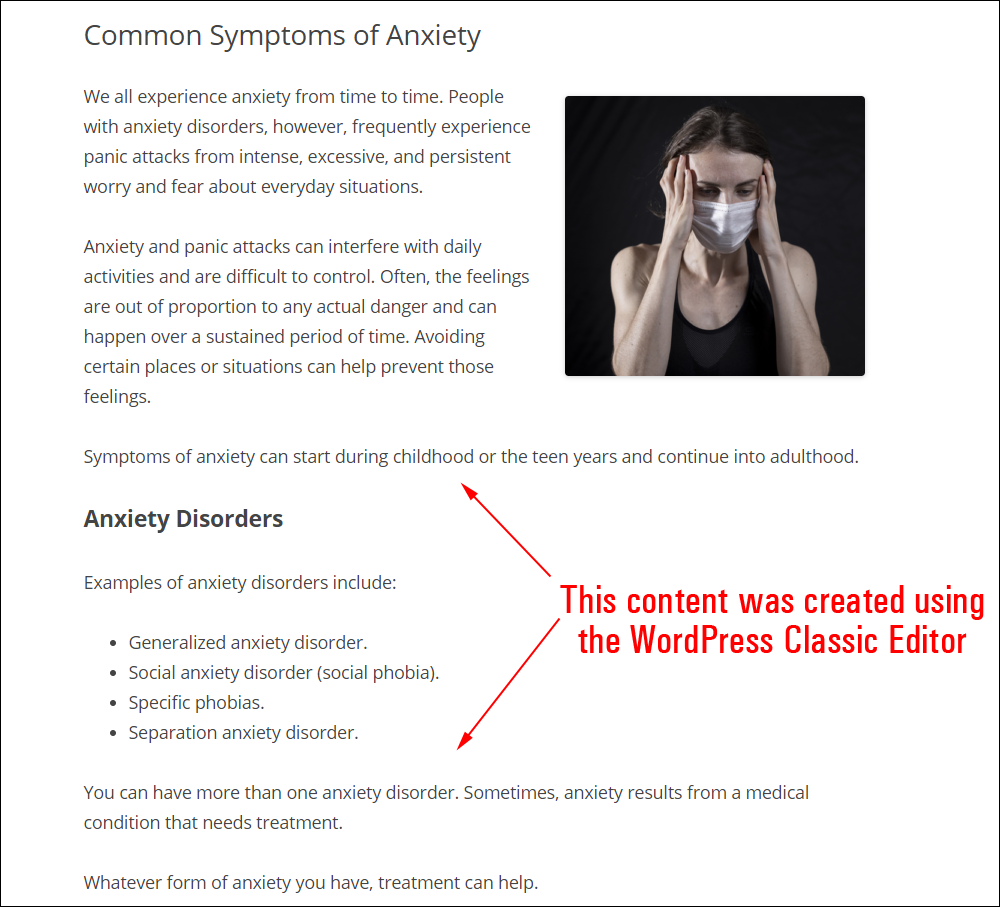
How To Use The Classic Block
In this section, we’ll cover:
- How to add a Classic block to your content.
- How to edit and configure your Classic block and block settings.
- How to remove the Classic block from your content.
For more details on using blocks (e.g. how to move blocks around your content), see this tutorial: How To Use Blocks.
Adding A Classic Block
To add a Classic block to your content:
- Either:
- Open a post created using the Classic Editor in the Block Editor (note: this automatically converts all the content into a Classic block).
- Click on the ‘Add Block’ tool in the Editing Toolbar section and select the Classic block (in Most Used or Text section),
- Add the Classic block in the Content Area.
- Type or paste in your content (if adding a new Classic block).
- Use the WordPress classic editor menu tools to edit and format your content.
Let’s go through the above steps:
Automatically Add A Classic Block When Opening An Existing Post Created With The Classic Editor
Here is a post created using the WordPress Classic Editor…
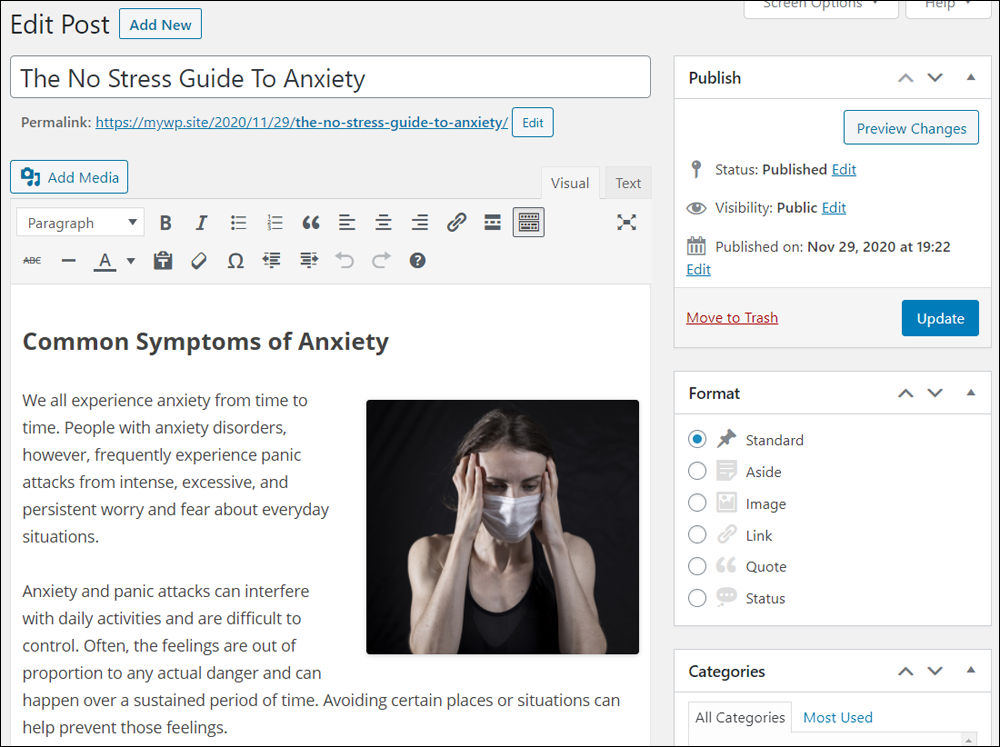
If permission settings allow, users can open posts using either the block editor or classic editor. (For more information on how to set these permissions, see this tutorial: The WordPress Block Editor)
In this example, we’ll open a post created using the Classic Editor inside the Block Editor.

This will automatically add a Classic block to your post and all of the content in the post editor will be contained inside this block.
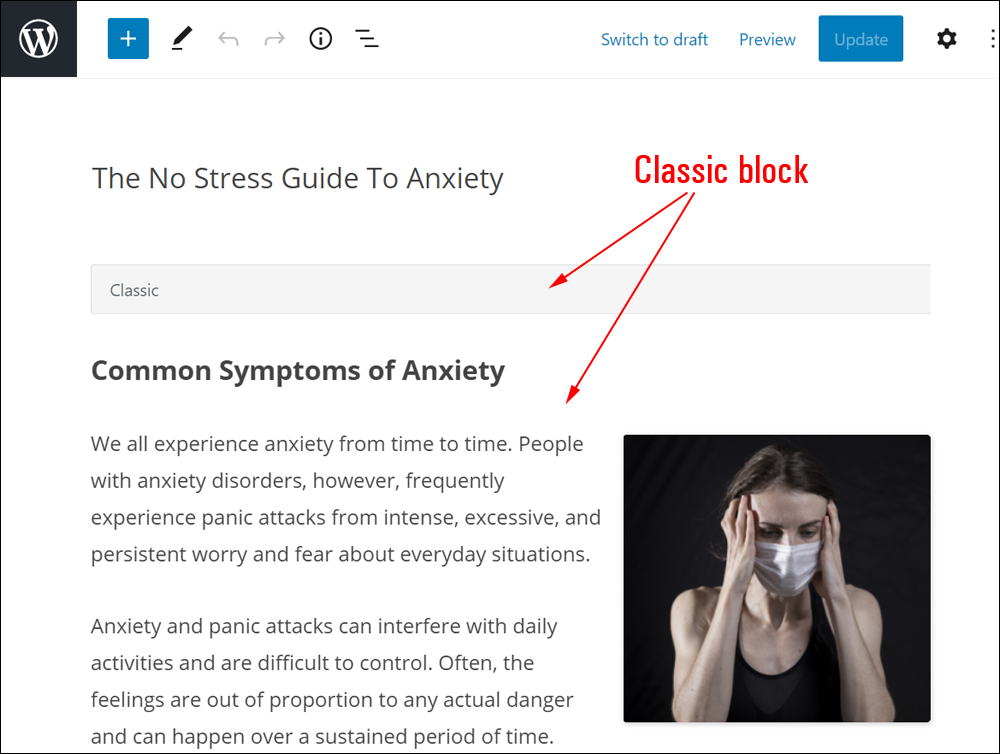
Clicking anywhere inside the block opens up the Classic editor menu.
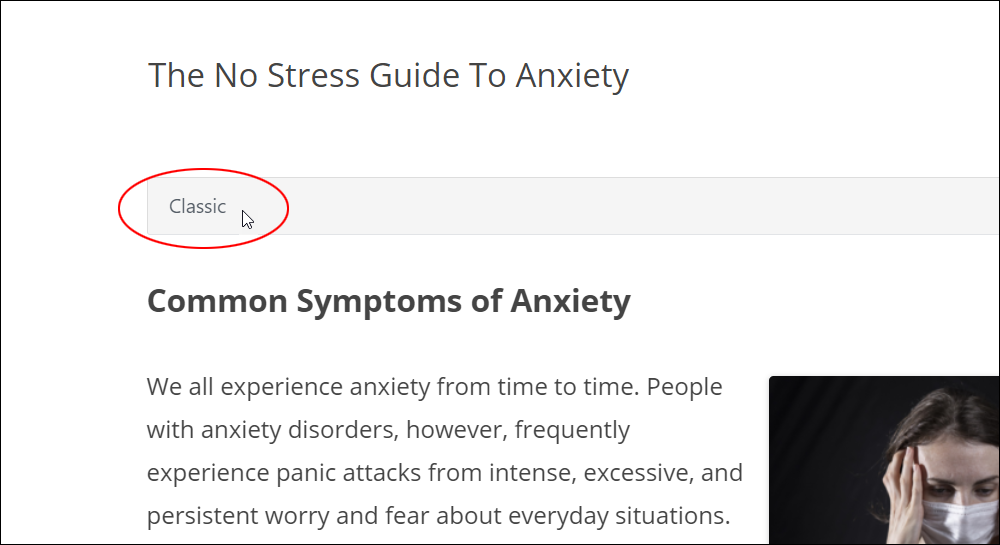
The classic editor menu includes all of the tools you need to edit your content just as if you were using the WordPress Classic Editor.
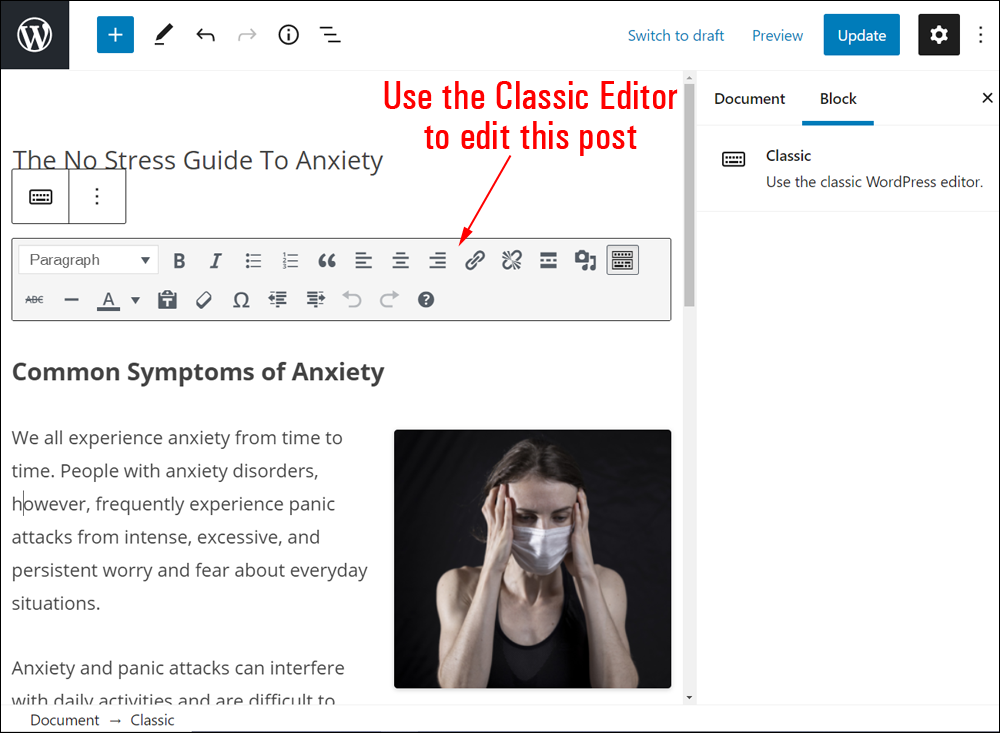
Add A Classic Block When Creating New Content With The Block Editor
To add a Classic block using the Block Editor, first, create a new post or page or open an existing post or page and either:
Click on the ‘Add Block’ tool and select a ‘Classic’ block…
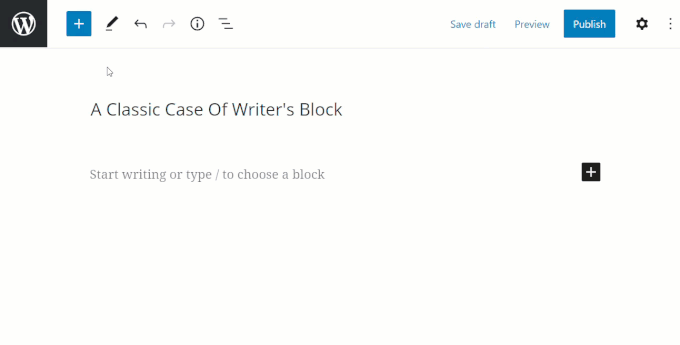
Or, select a Classic block using the Inserter tool in the Content Area.
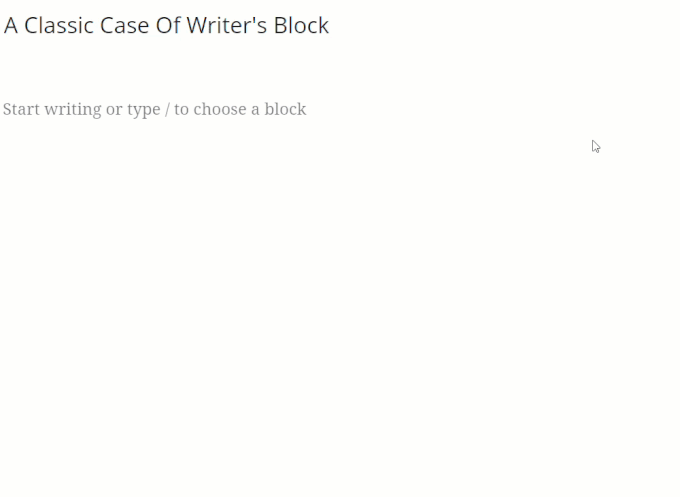
After adding a Classic block, begin typing or paste in your content.
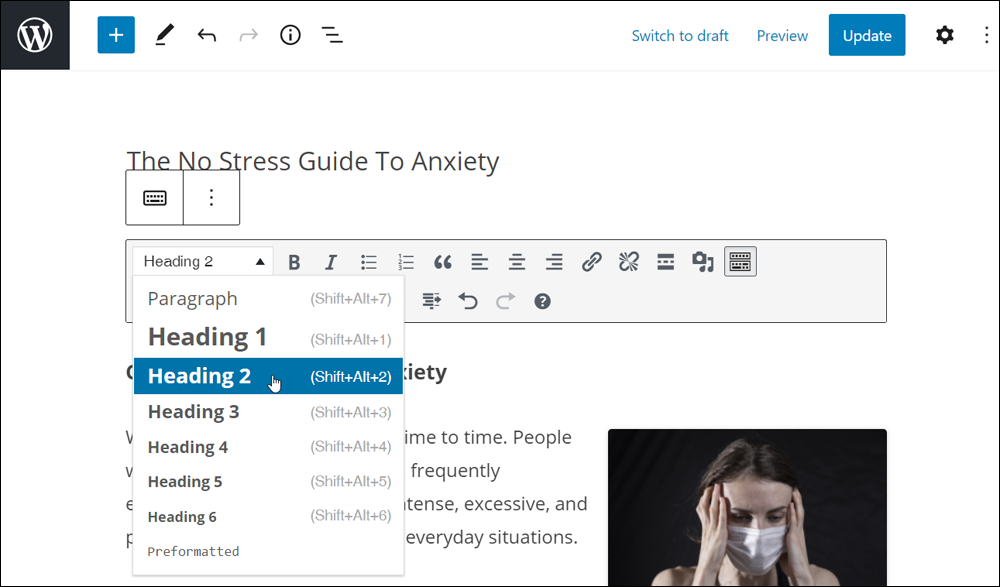
After adding and editing your content inside the Classic editor, save, publish, or update your post or page.
How To Edit A Classic Block
All content editing is done using the menu buttons and options inside the Classic block’s content editing toolbar.
To edit your content inside the Classic Block:
- Click inside the Classic block to select it.
- Use the Classic Content Editor tools to edit, format, and customize your text, add media, hyperlinks, etc. To learn how to use all the classic editor menu options, see this tutorial: How To Use The WordPress Classic Editor

![]()
To learn how to switch from the Block Editor to the Classic Editor, see this tutorial: How To Use The WordPress Block Editor
The Classic block provides a couple of additional useful options that you can use to format and edit your content:
- Convert to Blocks
- Edit as HTML
Let’s go through these options briefly:
Convert to Blocks
If you add content to a post or page using a classic block, you can convert your content into blocks by clicking on Convert to blocks in the Classic block editor.
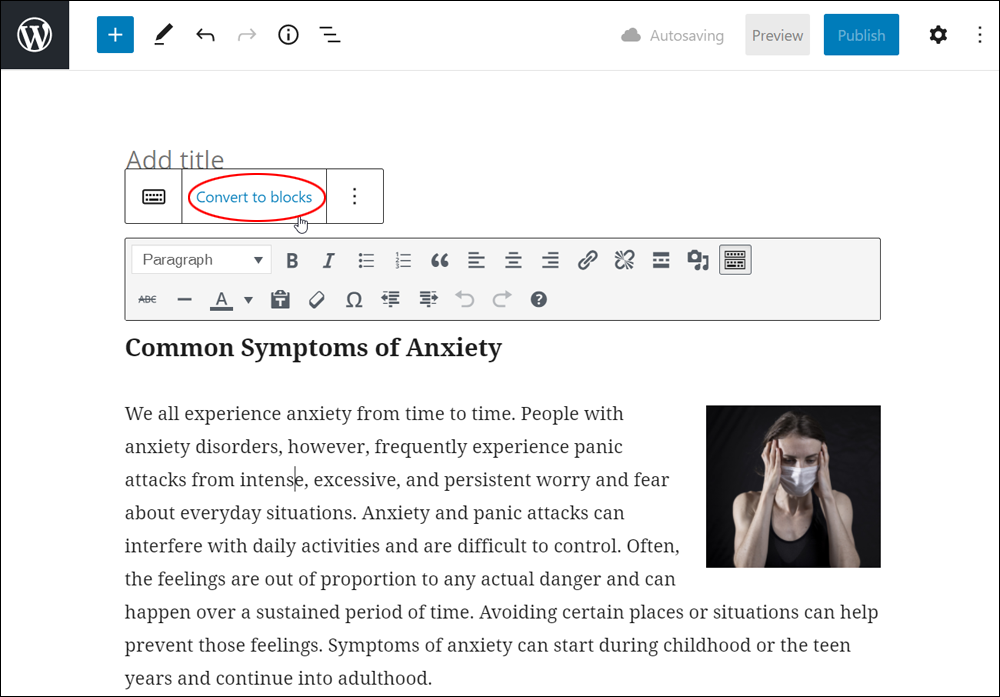
This will automatically add the right formatting tags and convert your content into blocks.
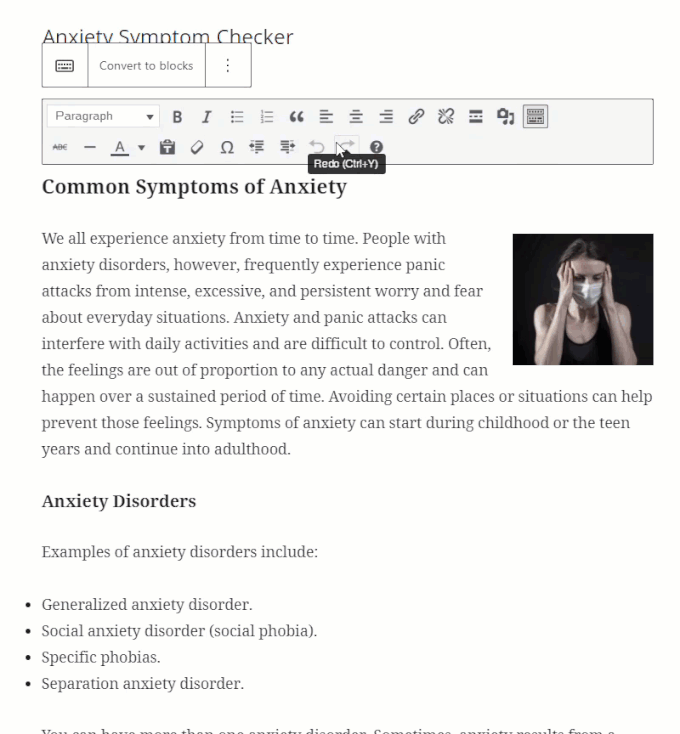
![]()
Notes:
- Opening content created with the Classic editor in the Block editor is ok, but we don’t recommend going the other way (i.e. opening content created with the Block editor in the Classic editor), as the block editor adds tags to your content.
- Additionally, elements such as images may be missing or may need to be realigned.
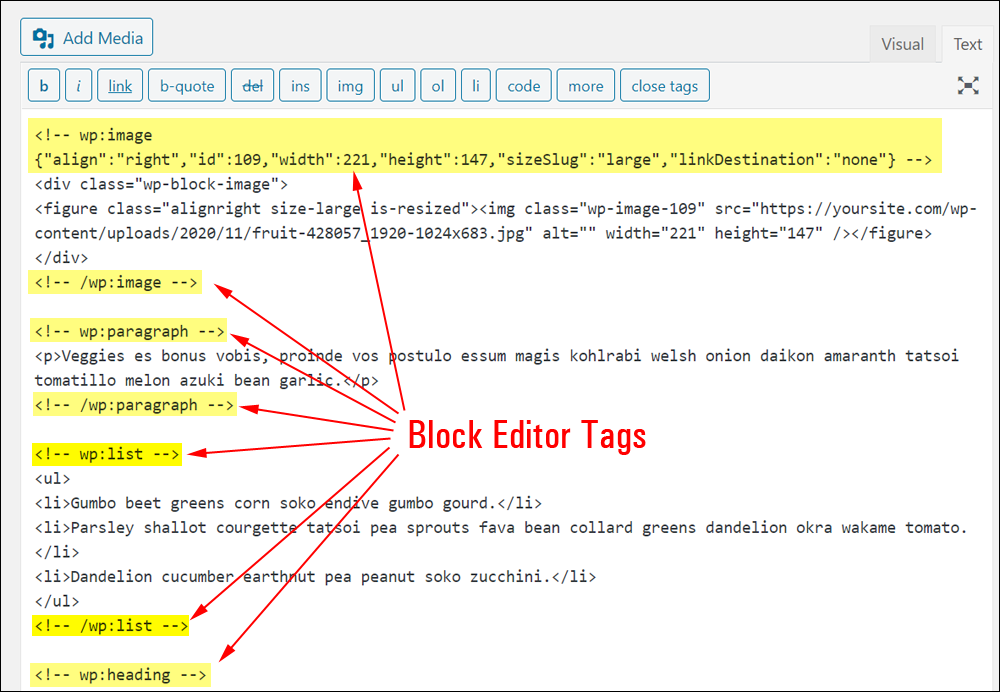
Edit as HTML
You can also format content inside the Classic block using the HTML editor (the equivalent of the ‘Text’ tab in the WordPress Classic Editor) by selecting More Options > Edit as HTML.
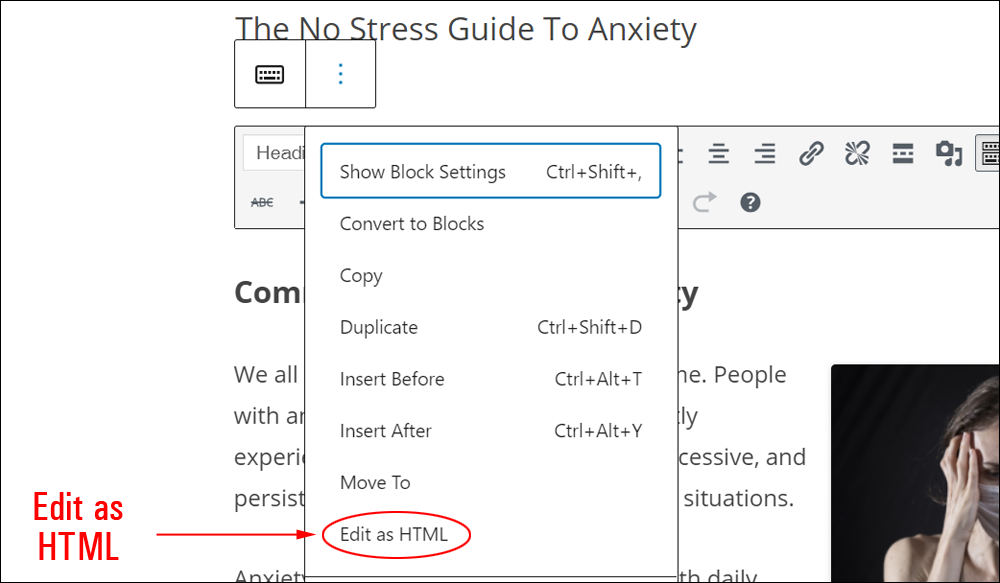
Edit your content as HTML and switch back to ‘Edit visually’ to preview your changes.
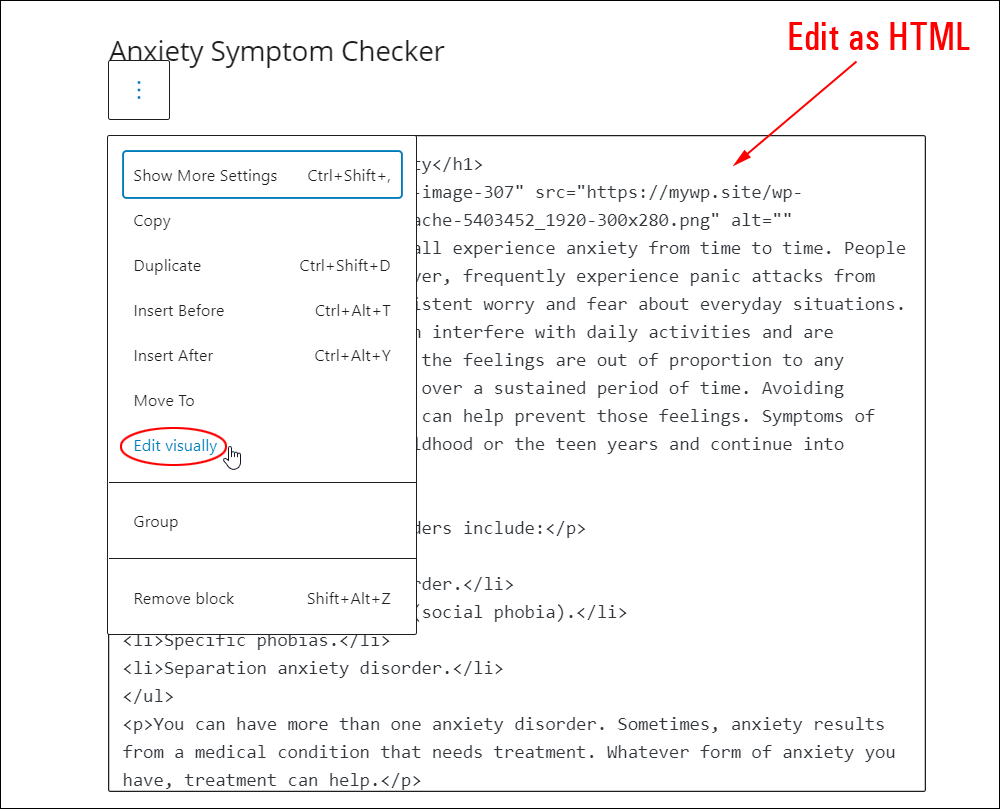
Remember to update and publish your post or page to save your changes.
Learn more about using HTML in this tutorial: A Basic Guide To Using HTML
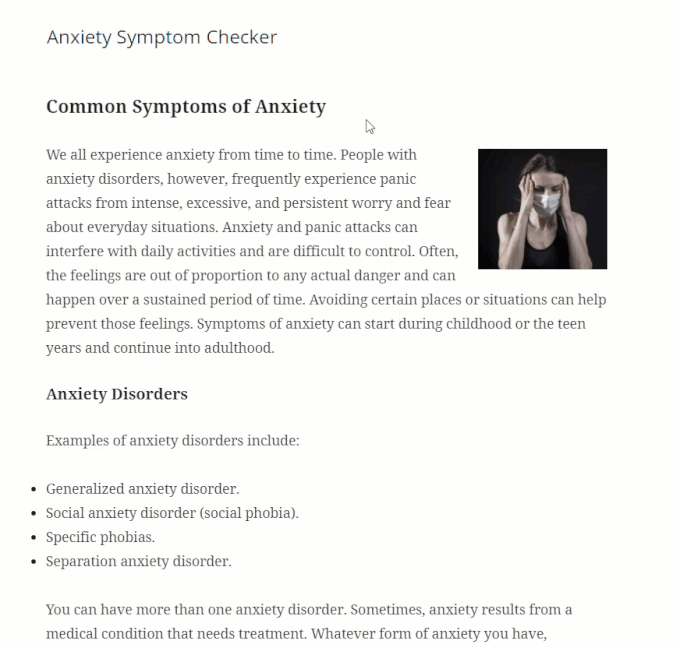
How To Remove A Classic Block
To delete or remove a Classic block from your content:
- Click inside the Classic block to select it.
- Select the ‘More Options’ tool in the Block Editor.
- Click on ‘Remove Block’.
- The block will be removed from your post or page.
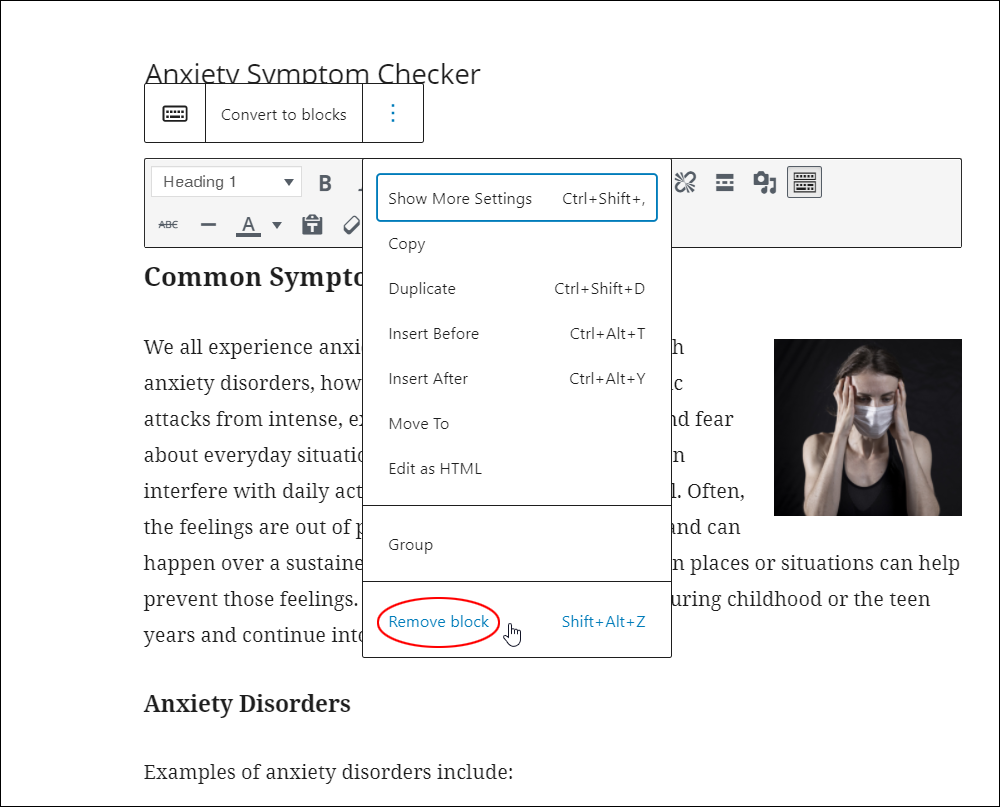
Additionally…
- You can reposition your block using the ‘Move Up’ and ‘Move Down’ arrows or the Drag and Drop handle tool (if you need help with this step, see this tutorial: How To Use Blocks).
- Note: You cannot convert a Classic block into a Reusable block.
Classic Block Tools, Options & Settings
The Classic block includes tools, options, and settings for:
- Categories Block Editor
- Categories Block Settings
Classic Block Editor
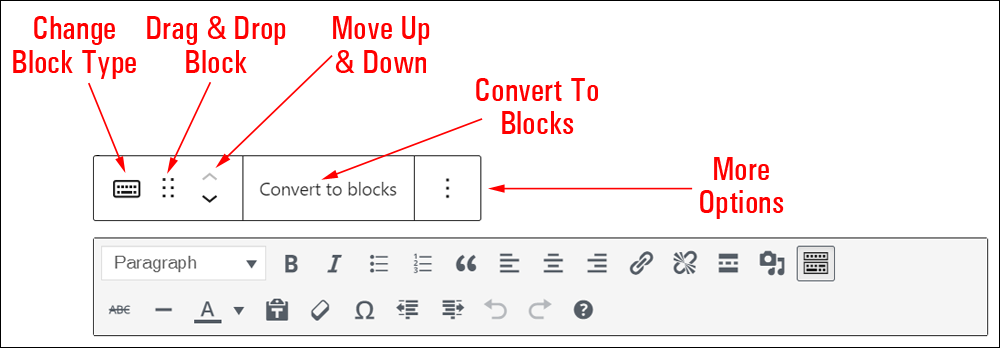
The Classic block editor includes tools that let you perform the following operations:
- Change block type or style (See ‘Classic Block – Additional Info’ section below.)
- Drag block
- Move block up and down
- Convert to blocks
- More Options – See How To Use Blocks to learn how to use this section.
Classic Block Settings
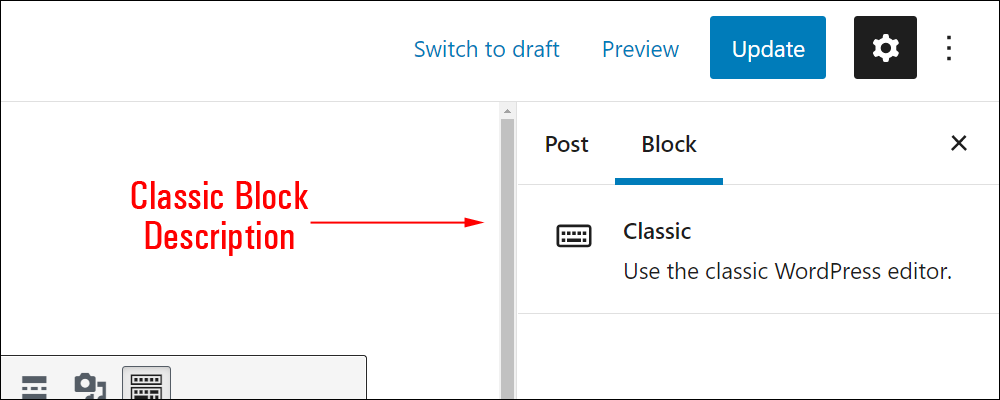
This section contains only a description of the block. There are no options in the Settings section for editing a Classic block.
Classic Block – Additional Info
The Classic block can be converted into the following block types:

Installing plugins or themes on your site may also add new functionality, options, or settings to the Classic block.
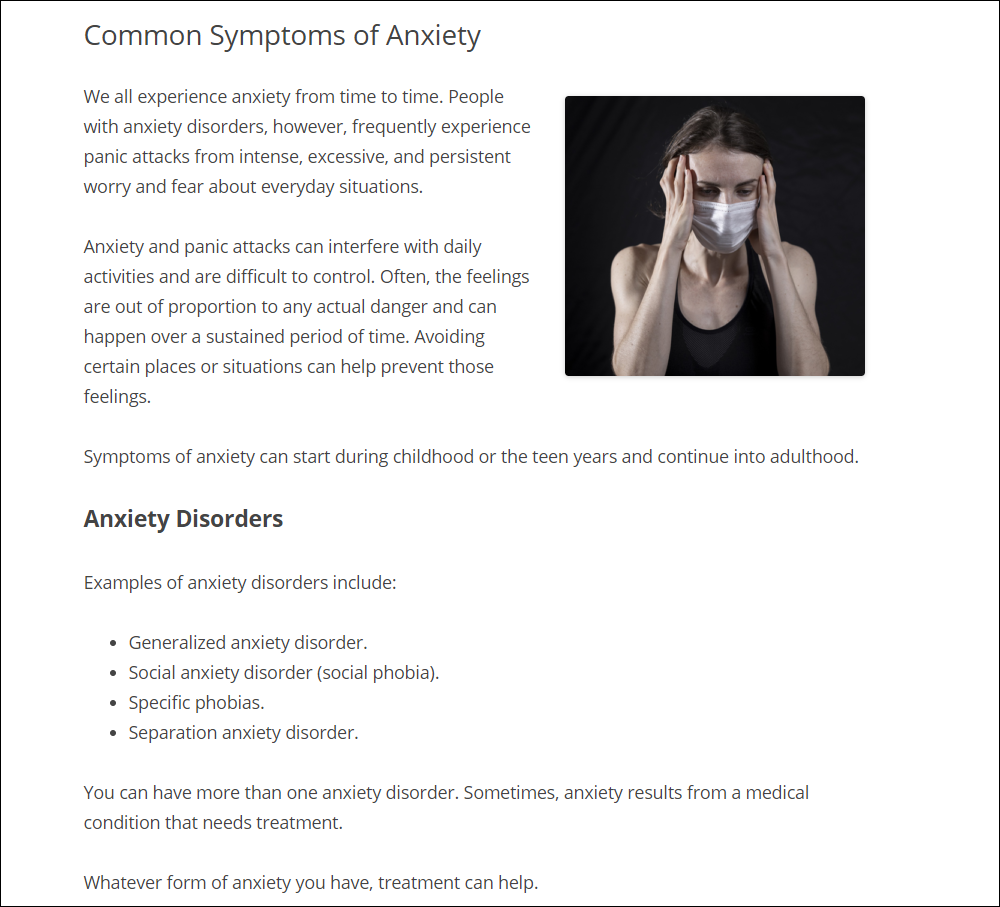
Congratulations! Now you know how to use the WordPress content editor’s Classic block.
For tutorials on how to use other blocks, go here: WordPress Block Editor – How To Use Blocks
***
Updated: July 5th, 2024
